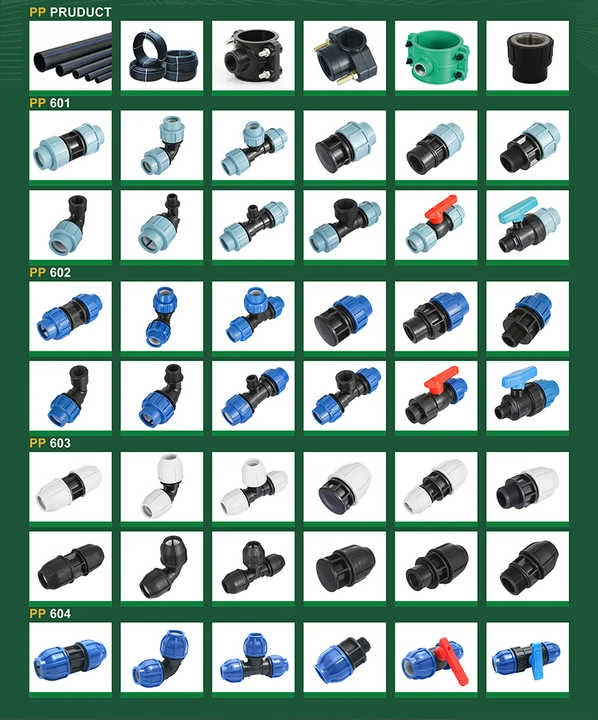When selecting HDPE (High-Density Polyethylene) pipe connectors, several key factors must be considered to ensure durability, performance, and compatibility with your piping system. Here are the most important considerations:
1. Material Compatibility
- Ensure the connector material matches or is compatible with HDPE pipes (e.g., HDPE, PP, or brass with appropriate linings).
- Check for chemical resistance if transporting aggressive fluids.
2. Connection Type
- Butt Fusion: HDPE Pipe Connectors Permanent, leak-proof joints for high-pressure applications.
- Electrofusion: Uses embedded heating elements for strong, reliable joints.
- Mechanical (Flanged, Compression, Stab): Allows for disassembly and is ideal for temporary or repair connections.
- Threaded/Socket Fusion: Used for smaller diameters or transitioning to metal pipes.
3. Pressure & Temperature Ratings
- Verify the connector’s PN (Pressure Nominal) rating matches the system’s operating pressure.
- Ensure it can handle the fluid temperature (HDPE typically handles -40°C to 60°C).
4. Pipe Size & Dimension Standards
- Match the connector’s OD (Outside Diameter) or ID (Inside Diameter) with the HDPE pipe.
- Confirm compliance with standards like ISO 4427, ASTM D3035, or EN 12201.
5. Application & Environmental Conditions
- Underground Use: Corrosion-resistant, with proper sealing against soil movement.
- Above-Ground Use: UV-stabilized HDPE or protective coatings.
- Fluid Type: Potable water, wastewater, gas, or chemicals may require specific certifications.
6. Ease of Installation
- Fusion welding requires specialized equipment and trained personnel.
- Mechanical fittings are quicker to install but may need periodic checks.
7. Certifications & Standards
- Look for NSF/ANSI 61 (for potable water), ASTM F714, ISO 4427, or EN 1555 (for gas).
8. Longevity & Maintenance
- Fusion-welded joints are maintenance-free, while mechanical fittings may need re-tightening.
9. Cost & Availability
- Balance between initial cost (mechanical vs. fusion) and long-term reliability.
10. Supplier Reputation & Warranty
- Choose reputable manufacturers offering warranties and technical support.
Final Recommendation:
For permanent, high-pressure systems, butt or electrofusion fittings are best. For temporary or repair applications, mechanical connectors are more practical. Always ensure compatibility with your HDPE pipe grade (PE80, PE100).
View more:https://www.ifanfittings.com/


